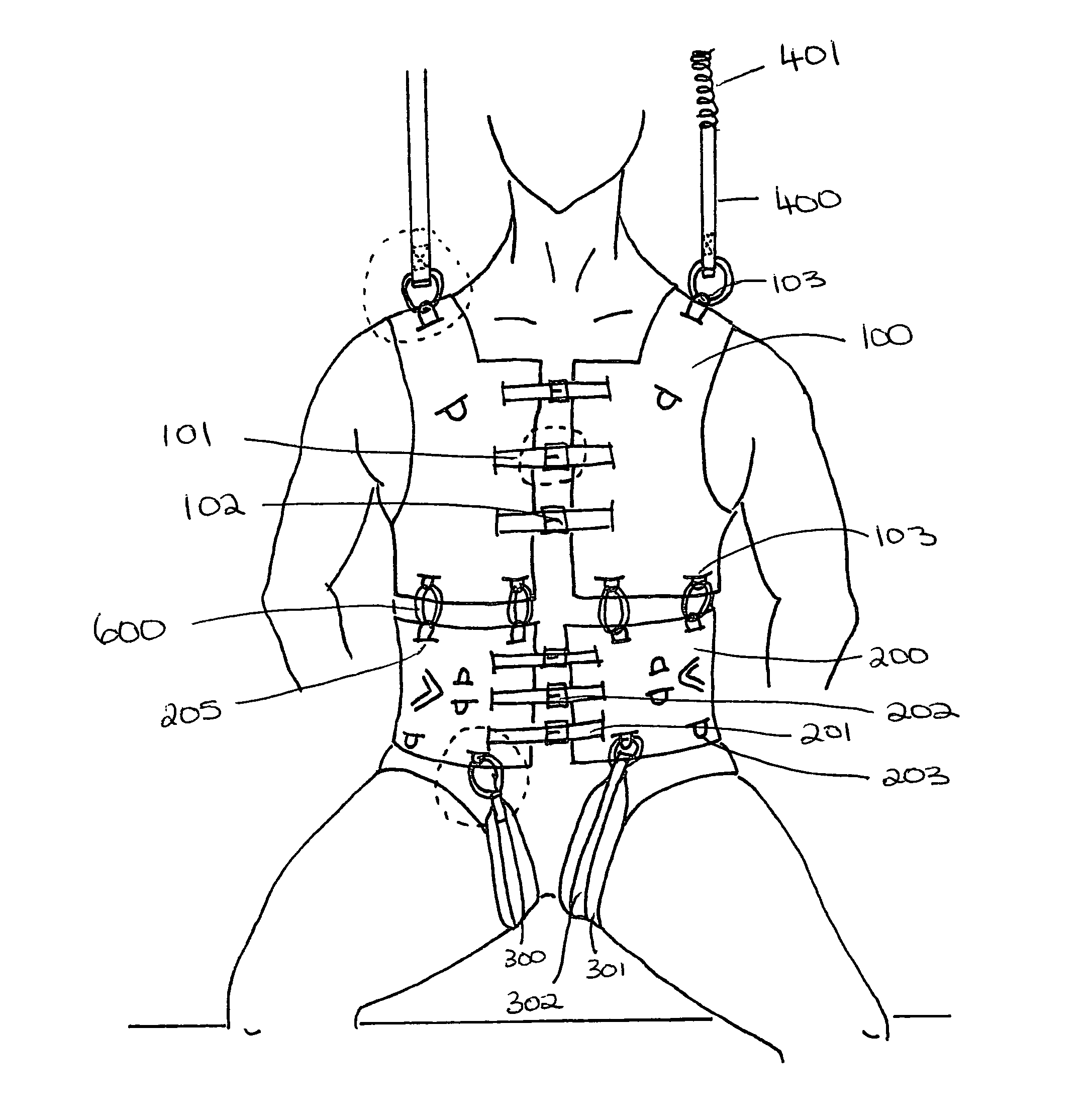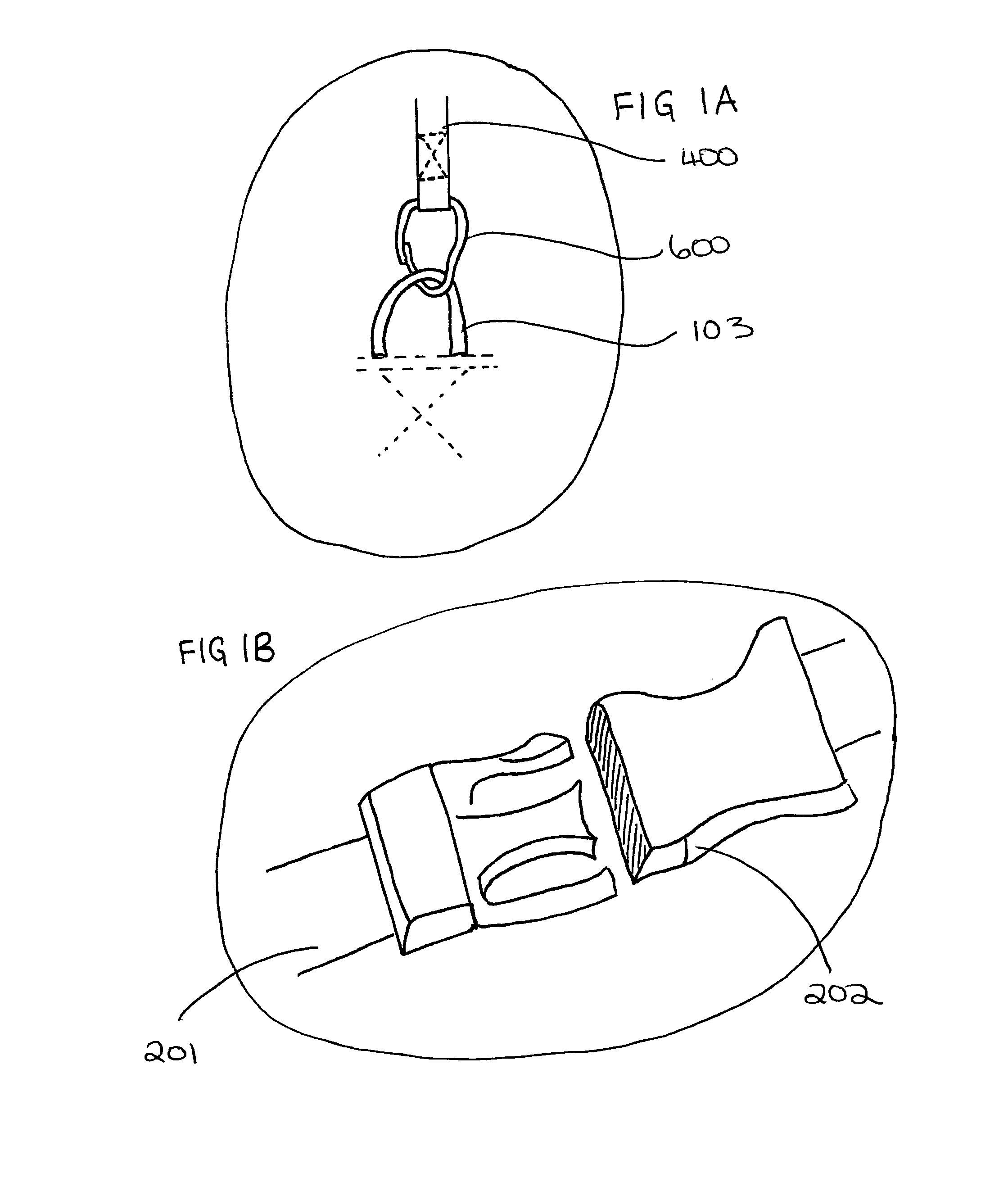Progressive mobility assistance garment for rehabilitation
a technology of mobility assistance and garments, applied in the field of progressive mobility assistance garments for rehabilitation, can solve the problems of not meeting the many needs that exist, no one assist garment can be used, and each has its own inadequacies and limitations, so as to improve the function of the limb, improve the control of infection and ease of application, and quick modify the functionality of the garments
- Summary
- Abstract
- Description
- Claims
- Application Information
AI Technical Summary
Benefits of technology
Problems solved by technology
Method used
Image
Examples
Embodiment Construction
[0060]In the FIG.s and the following detailed teachings the numbers have the following descriptions:
[0061]100: An open front vest that can be attached and released from the pelvic belt 200. It can be made of a flexible, durable material that and preferably is made from a material that can be wiped with anti-microbial agent, be laundered, or include a liner for protection against contamination for infection control. This piece fits like a life jacket which, as shown in this embodiment, includes three adjustable length web strap / buckle combinations to close the front of the vest. The webbing is preferably wipeable with an anti-microbial agent, and the buckles can be plastic parachute buckles or ghost buckles that can be easily released and wiped down for infection control. The vest is provided with a plurality of attachment means affixed to the material of the vest, such as D rings or webbing loops, 203, which can be used to attach to corresponding loops on other garment pieces, or wi...
PUM
 Login to View More
Login to View More Abstract
Description
Claims
Application Information
 Login to View More
Login to View More - R&D
- Intellectual Property
- Life Sciences
- Materials
- Tech Scout
- Unparalleled Data Quality
- Higher Quality Content
- 60% Fewer Hallucinations
Browse by: Latest US Patents, China's latest patents, Technical Efficacy Thesaurus, Application Domain, Technology Topic, Popular Technical Reports.
© 2025 PatSnap. All rights reserved.Legal|Privacy policy|Modern Slavery Act Transparency Statement|Sitemap|About US| Contact US: help@patsnap.com



